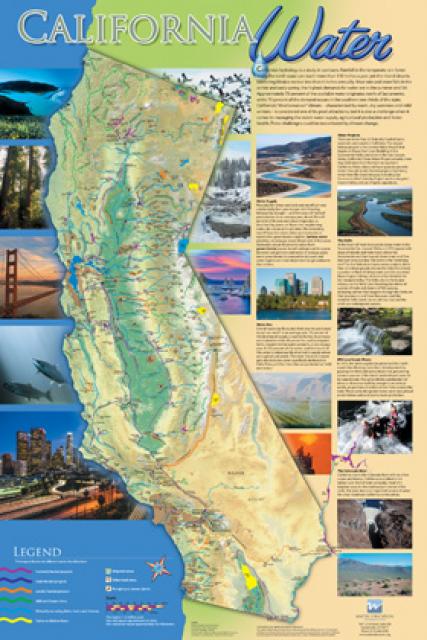Winter 2022 California Project WET Gazette
Volume XXVll, Issue I
Exploring Water Infrastructure & Climate Resilience
Winter is coming. Every ‘Game of Thrones’ fan knows this dreaded warning and plea to all in the Seven Kingdoms to unite before its too late to counter a climate disaster complete with frozen zombies. As I look over a sea of bright green grass and January flowers that started blooming around Thanksgiving, I am thinking the equally dreaded question Californians are asking more often – is winter coming and how much water will it deliver?
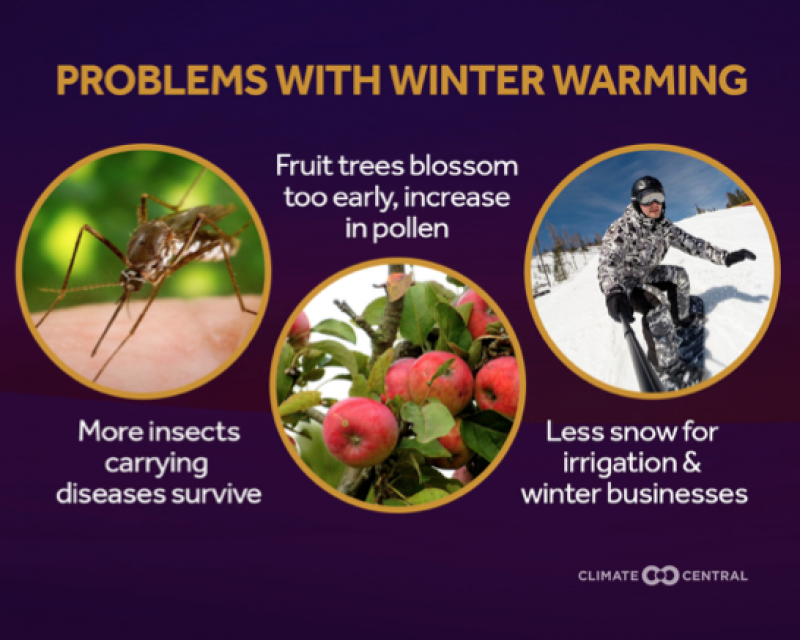 Our winter weather is changing. Participants in our climate workshops have seen it for themselves in regional data integrated into Project WET activities like ‘Wet Vacation’ (Portal) and ‘Blue River’ (p: 135). The increase in mean minimum temperatures since the mid-20th century, for example, has eroded winter chill hours in the San Joaquin Valley - important for the growth of fruit like cherries, peaches and apricots. Other examples include the reduction in average snow accumulation at lower elevations throughout the Sierra Nevada and the telltale shifts in hydrograph data associated with earlier or even no snowmelt.
Our winter weather is changing. Participants in our climate workshops have seen it for themselves in regional data integrated into Project WET activities like ‘Wet Vacation’ (Portal) and ‘Blue River’ (p: 135). The increase in mean minimum temperatures since the mid-20th century, for example, has eroded winter chill hours in the San Joaquin Valley - important for the growth of fruit like cherries, peaches and apricots. Other examples include the reduction in average snow accumulation at lower elevations throughout the Sierra Nevada and the telltale shifts in hydrograph data associated with earlier or even no snowmelt.
The naturally erratic nature of our Mediterranean climate has gotten more extreme. Another brutal summer of extreme drought, deadly ‘heat dome’ events and multiple mega-fires was ended by an equally extreme bomb cyclone and atmospheric river combined event that shattered previous precipitation records throughout northern California.
The October storm event dropped a staggering estimate of 7.6 trillion gallons of water – enough water to supply two million homes for a year or to irrigate 150,000 acres of farmland. Recent storms set new December rain and snowfall records throughout the state, yet most of our reservoirs remain below their historical capacity to date and severe to extreme drought conditions continue to persist throughout most of the state.
This ‘weather whiplash’ is concerning in California where much of our surface water infrastructure is at least a half century old and managed for two diametrically opposite objectives – flood protection and water storage. That’s easier to do when climate conditions allowed for lowering reservoir levels in the fall to make room for winter storm flows before ‘topping off’ reservoirs with spring to early summer snowmelt. It’s not so easy when a majority of the water ends up falling and flowing downhill in a single season.
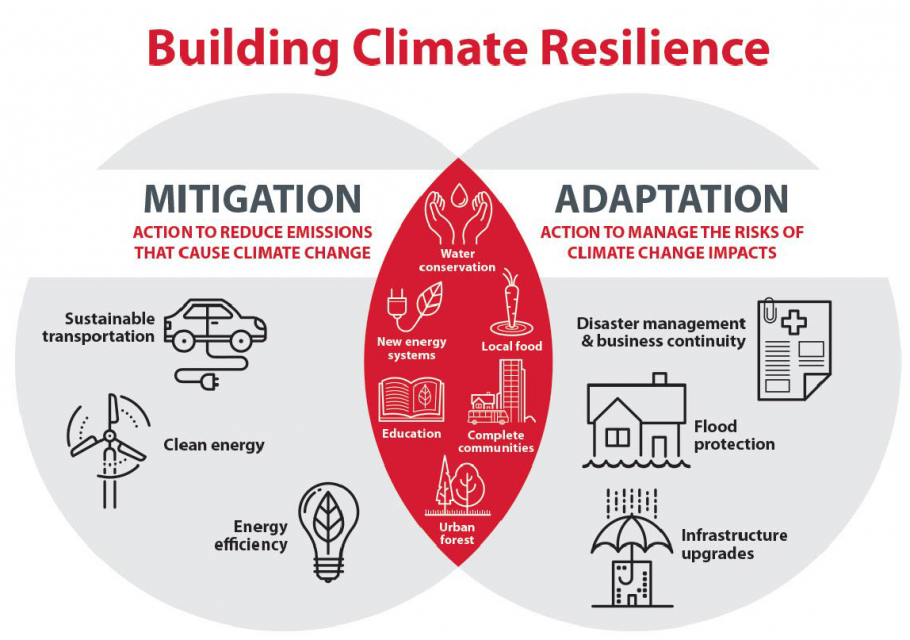 Increasing climate resiliency throughout California is vital for the future of our state. The current state budget alone includes $15 billion to address our multiple climate risks, with an additional $45 billion coming from the infrastructure improvement legislation Congress passed in November. Updating our state’s water infrastructure is a key priority of both funding sources. But what are some of the climate risks facing our communities? And how would these huge investments increase California’s resiliency to climate change?
Increasing climate resiliency throughout California is vital for the future of our state. The current state budget alone includes $15 billion to address our multiple climate risks, with an additional $45 billion coming from the infrastructure improvement legislation Congress passed in November. Updating our state’s water infrastructure is a key priority of both funding sources. But what are some of the climate risks facing our communities? And how would these huge investments increase California’s resiliency to climate change?
The Project WET activity ‘8-4-1, One for All’ (p: 299) is a great place to begin. The activity engages students in exploring the eight major water user categories, identifying specific local examples of water users within each category and the interrelationship of each to other water users and four key water variables – water quantity, water quality, cost and time. The activity’s focus is on identifying potential conflicts and opportunities to resolve for the benefit of the community as a whole – the “one.” It is a great activity for beginning exploration of climate vulnerabilities and potential solutions within a local web of water users.
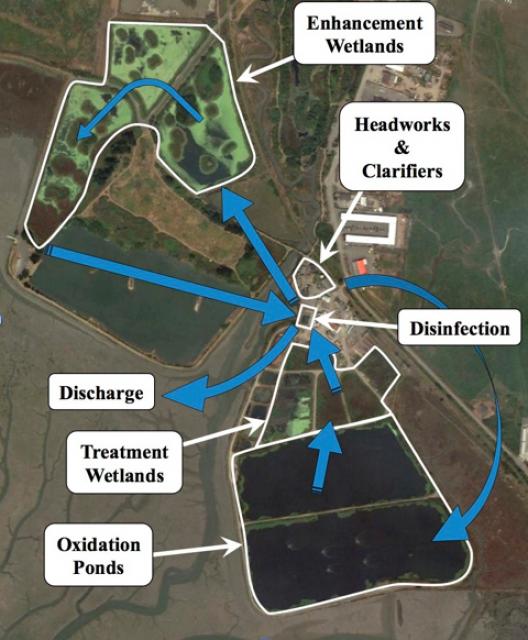 The activities ‘Urban Waters’ (p: 413) and ‘Super Bowl Surge’ (p: 405) have students exploring specific water infrastructure, how water moves through a municipal system in the first activity and specifically a wastewater system in the second. You can extend either activity to have students consider potential risks posed by a changing climate on either system – and to develop questions to ask the local water system managers in their own community during a virtual or in-person tour.
The activities ‘Urban Waters’ (p: 413) and ‘Super Bowl Surge’ (p: 405) have students exploring specific water infrastructure, how water moves through a municipal system in the first activity and specifically a wastewater system in the second. You can extend either activity to have students consider potential risks posed by a changing climate on either system – and to develop questions to ask the local water system managers in their own community during a virtual or in-person tour.
Secondary educators may want to follow either of the above activities up with ‘The Price is Right’ (p: 357), which has students exploring the economics of water infrastructure and the relationship to our home water bills. I’d also suggest leaving the solution open to student creativity if one challenges students to create a plan that is climate resilient and allow them to consider integrating ‘green infrastructure’ elements that are in the activity map. The Water Project Cost Sampler included in the activity is a wonderful resource for helping put current State and Federal budget allocations into perspective.
With the simple addition of a small paper cup to the ‘Blue River’ (p; 135) activity, more than a few educators have experienced the challenge climate change is posing for reservoir managers. The cup represents a dam and reservoir, and the bearer is given the dual task of containing flood waters and having water for a given flow through dry portions of the year. One major caveat: there is a limit to how much ‘water’ they can release due to the spillway size of their dam.
Most find it easy to meet the dual task in round one when simulating historic snowpack conditions. But they fail miserably in one or both tasks when all the water is coming down in one season – or if the water fails to show at all. It is fun as this occurs during the physical simulation, but the discussion turns quite serious as students begin to think about the real-life ramifications and ask questions about how to change reservoir operations, dam spillway size, aging downstream levees and alternative methods to help capture and store more water.
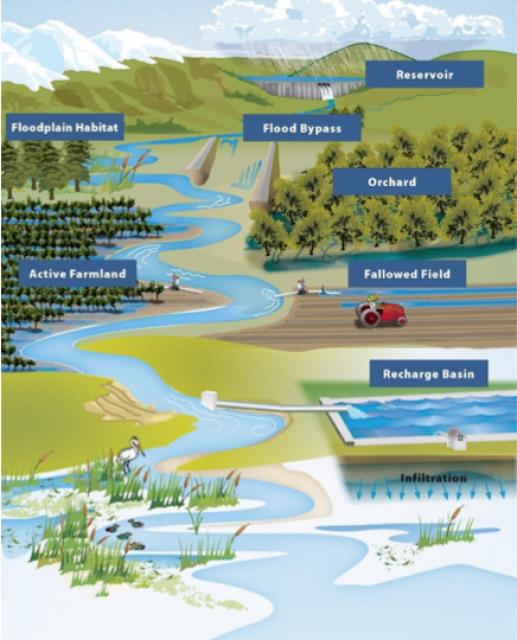 The state and organizations like Ducks Unlimited and River Partners have been investing in restoring meadows, floodplains, and wetlands through California. Each are examples of Earth systems in the ‘8-4-1, One for All’ activity and ‘green infrastructure’ that can capture, store and slowly release water from floods, an upstream dam or loss of snowpack. That was the focus of the Autumn Gazette with examples of Project WET activities to engage student in studying the ecosystem services provided by these ecosystems.
The state and organizations like Ducks Unlimited and River Partners have been investing in restoring meadows, floodplains, and wetlands through California. Each are examples of Earth systems in the ‘8-4-1, One for All’ activity and ‘green infrastructure’ that can capture, store and slowly release water from floods, an upstream dam or loss of snowpack. That was the focus of the Autumn Gazette with examples of Project WET activities to engage student in studying the ecosystem services provided by these ecosystems.
Groundwater aquifers are also examples of an Earth system that can be harnessed to store water. Anyone who has used ‘Get the Groundwater Picture’ (p: 143) knows the scenario posed in the activity mirrors our current condition in many areas of the state, particularly in the Central Valley – an aquifer over-pumped by human demands on the surface. The activity is already set up for students to consider the pros and cons of storing water underground as a climate resilience strategy, methods for recharging an aquifer – and adding a look at potential costs creates a new scenario for ‘The Price is Right’ activity!
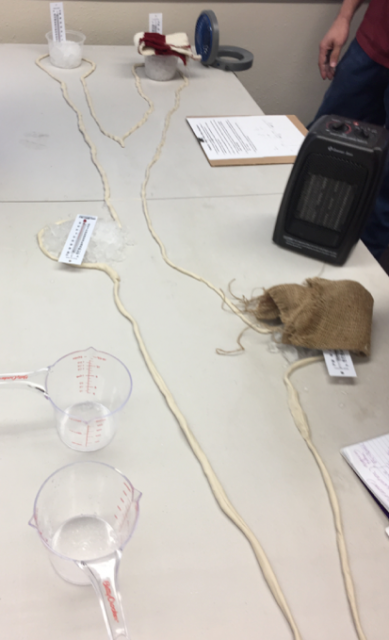 Investments are also being made to study the variables that influence the melt rate of snowpack, which students can explore through the Project WET activity ‘Snow and Tell’ (p: 387). Students build tabletop watershed models fed by simulated high elevation snowpack and low elevation snowfields. Variables studied in the activity include snow depth, slope aspect, exposed or sheltered snow, increased heat, increased wind and increased heat and wind.
Investments are also being made to study the variables that influence the melt rate of snowpack, which students can explore through the Project WET activity ‘Snow and Tell’ (p: 387). Students build tabletop watershed models fed by simulated high elevation snowpack and low elevation snowfields. Variables studied in the activity include snow depth, slope aspect, exposed or sheltered snow, increased heat, increased wind and increased heat and wind.
‘Snow and Tell’ also has students brainstorming and testing additional snowmelt variables, which can include rain on snow and snow darkened by smoke, dust and other visible pollutants blown in by the wind and settling on the snow, And they learn how to calculate snow-water equivalents. Each of these variables is being studied by researchers throughout the West as well as the role forest management could play in better capturing and preserving snowpack as a resiliency strategy.
Other Project WET activities to consider through the lens of infrastructure and climate resiliency include ‘Storm Water’ (p: 395), introduces students to common green infrastructure options that are being integrated into urban storm water management systems; ‘Back to the Future’ (p: 307), where students debate the pros and cons of where to build on a floodplain; and ‘Color Me a Watershed’ (p: 239), which focuses on the relationship of land use changes on stream hydrology.
The weather extremes we have been experiencing are consistent with the impacts expected as Earth’s cycles become supercharged with greater amounts of heat energy being trapped in the atmosphere by an ever-thickening blanket of greenhouse gases. It is not snow zombies marching across a frozen landscape we are worried about in California but swirling dust devils dancing across increasingly arid valleys.
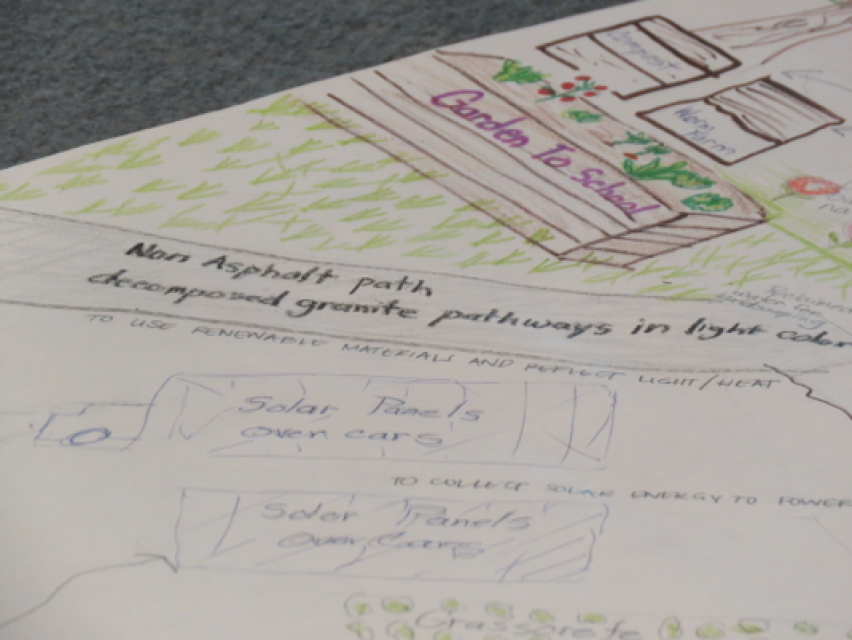 It will take people acting toward common goals to reduce greenhouse gas emissions and prepare our communities to be more self-sustaining and climate resilient. If one began a course of study on infrastructure and climate with ‘8-4-1, One for All,’ a wonderful concluding activity would be to see how students might strengthen their original community climate resiliency strategies – and identify climate vulnerabilities in their own community and actions the community can take to increase its own resiliency.
It will take people acting toward common goals to reduce greenhouse gas emissions and prepare our communities to be more self-sustaining and climate resilient. If one began a course of study on infrastructure and climate with ‘8-4-1, One for All,’ a wonderful concluding activity would be to see how students might strengthen their original community climate resiliency strategies – and identify climate vulnerabilities in their own community and actions the community can take to increase its own resiliency.
Infrastructure is not an exciting topic, which is why it is often neglected until its failure enters the news cycle; yet it is what sustains our lives and communities. I hope this article has highlighted activities you can use to engage students in this topic. You will find more information in the Websites of Interest. Check out the Winter Events and Professional Development Opportunities that are available around the state in early 2022 – and the roster of Grants, Scholarships & Awards and Student Opportunities available as we start a New Year!
WEBSITES OF INTEREST
Article: ‘No, California’s drought isn’t over. Here’s why.’
California’s drought is not over despite a bounty of snowfall and rain over the past month: California’s snowpack — a critical source of water — is 150% of average for Jan. 4. But with three months left of the wet season, it’s not enough to bring an end to the severe drought and water shortages. Climatologists predict dry conditions for the rest of the season. And conservation still lags.
PPIC: Climate Change and California’s Water
Managing water is at the forefront of climate change adaptation in California. Our water grid is not prepared to handle a more volatile climate. Most of California’s nearly 1,500 dams and reservoirs were built more than 50 years ago, and designed for the hydrology of the past. Strategic investments and rethinking infrastructure operations can reduce the impacts from more intense droughts and floods.
Article: ‘Climate change worsened weather extremes in 2021’
Extreme weather events in 2021 shattered records around the globe. Hundreds died in storms and heatwaves. Farmers struggled with drought, and in some cases with locust plagues. Wildfires set new records for carbon emissions, while swallowing forests, towns and homes. Many of these events were exacerbated by climate change.
Climate Central: 2021 Winter Package
Winter season has been the fastest-warming season since 1970 due to climate change for most locations in the U.S. and warming winters are having negative impacts on regional economies and our health. The Winter Package includes data and graphics to explore local and national trends in winter average temperatures and winter days above normal since 1970 – including for 14 California locations.
Article: ‘A NASA Scientist Explains Why the Weather is Becoming More Extreme’
This idea that you can go from extreme to extreme very rapidly is giving society this sensation of a whiplash and is partly due to an intensified water cycle. The water is moving faster. That type of shift can be quite jarring — and a direct challenge for ecosystems and other things that we care about in society. They really are connected in many cases to the same types of phenomenon and this new report connects the dots between this phenomenon and our human footprint.
Article: ‘Rush is on to drought-proof California’s archaic water system’
Caught in one of the driest two-year stretches in state history, the key players battling California’s drought have plenty to be concerned about. But one thing is glaringly different this time around: California’s coffers are overflowing, creating an opportunity for the nation’s most populous state to renovate and prep its outdated water systems for climate change.
The California of today, with a population of nearly 40 million people and agricultural land covering millions of acres, would not be possible without investments in the human-engineered infrastructure that transports water and power throughout the state – and our ‘green infrastructure’ of watersheds and ecosystems that are just as important to the sustainability of our water supplies and flood management.
Article: ‘Danger in Droughtsville: California’s urban water at risk’
California’s water supply is endangered as multiple crises intensify: worsening droughts, competition for scarce supplies, sea level rise, groundwater contamination, earthquakes, wildfires and extreme weather. CalMatters delved into the details of what scientists and planners have determined could jeopardize the water supply of a typical California city — and potential solutions.
Article: ‘Our infrastructure decisions now define our future climate’
Climate change is already impacting communities in every country, across every continent, from rising sea levels and extreme weather events, to disrupted economies, food and water insecurity and conflict. But a key aspect of our climate efforts rarely receives the attention it should. Infrastructure — from homes and power plants to hospitals and roads — influences every aspect of our lives. It is key to defining our climate future.
American Rivers: What is Green Infrastructure?
Green infrastructure is an approach to water management that protects, restores, or mimics the natural water cycle. It means planting trees and restoring wetlands, rather than building a costly new water treatment plant. It means restoring floodplains instead of building taller levees. Green infrastructure integrates natural and human engineered systems to create an effective, economical combined system providing clean water, conserves ecosystem values and functions and a wide array of benefits to people and wildlife.
Article: ‘Allocating Water as Snowpack Declines’
Knowing that snowpack is dwindling, it’s time to figure out how we can adapt to drier conditions. One place we are exploring our climate adaptation potential is in Washington’s forests. In the Western Cascades, snowpack can be retained by opening up the forest canopy. Forest managers can apply these connections to maximize snowpack.
California Budget 2021-22 – Climate Risk Reduction
The current California State Budget includes $15 billion in investments over multiple years to address and reduce the state’s multi-faceted climate risks.
Article: ‘$1T infrastructure bill benefits Valley ag and rural communities’
The California Farm Bureau is applauding Congress for passing the Infrastructure Investment and Jobs Act, commending the benefits it extends to local agriculture and rural communities that include water storage and conveyance, road and highway improvements and broadband internet for areas currently without coverage. It also invests in water infrastructure for clean drinking water, greater water recycling and ecosystem restoration in California.
DWR: Urban and Multi-benefit Drought Relief Program
One of two Department of Water Resources’s Drought Relief Grant Programs that offers financial assistance to address drought impacts through implementation of projects with multiple benefits, including address immediate drought impacts on human health and safety, and to protect fish and wildlife resources plus other public benefits, such as ecosystem improvements. Click here to see a list of projects, many focused on upgrading water infrastructure, with costs.
Article: ‘Climate Change Is Here. It’s Bad. Here’s What You Can Do’
California’s climate challenges can seem overwhelming. But here’s something that makes it easier: there is still time to act. Rapid, bold emissions reductions, starting now, would limit climate change and its effects. This piece is for those who want to respond, but don’t know where to begin.
This UC Merced website offers a collection of web tools for visualizing past and projected climate and hydrology of the contiguous United States for addressing questions relating to Agriculture, Climate, Fire Conditions, and Water. Find your variable!
California Department of Water Resources: Education
We provide a variety of resources to K-12 educators – including parents – to encourage water education in and out of the classroom. Our free supplementary materials can be used to help learn about California’s water resources. Check out our ‘Water Wednesdays’ You Tube page for recording of our weekly conversations with DWR researchers on a range of water topics.
U.S. Geological Survey: Water Science School
Tap into over 140 years of USGS research in the natural sciences in the form of activities, maps, podcasts, online lectures, videos and more. Browse thousands of ideas for using these resources in elementary, secondary, university and informal education settings. Don’t forget to checkout the USGS Water Science School loaded with great material for use with multiple Project WET activities!
PROFESSIONAL DEVELOPMENT OPPORTUNITIES
Best Practices in Environmental Education & Stewardship Institute
The California Environmental Education Foundation (CEEF) invites educators who teach students in grades 4-12 at schools in Los Angeles County to apply to the 2022 online CEEF Teacher Institute. CEEF offers a $500 teacher stipend, Project WET training, a wealth of resources and an opportunity to purchase up to three (3) CEUs from UC Davis upon completing the Institute.
California Water Institute for Teachers
Our multi-day professional development experiences for K-12 teachers focus on the water infrastructure and supply that serve the local area of each institute, while providing teachers with greater depth of knowledge and tools to engage students in learning about their local watersheds and development of their environmental literacy about the places where they live and recreate. Participants also receive Project WET training, are able to earn continuing education credit and an opportunity to receive a $200 stipend.
California Project WET Workshops
The California Project WET program and our sponsors are eager to assist in supporting local professional development and water education outreach efforts. Visit our website to find out about upcoming workshops or contact the California Project WET Coordinator if you would like to be notified when workshops are organized in your area.
California Project Learning Tree Workshops
Project Learning Tree uses trees and forests as windows on the world to increase students’ understanding of the environment and actions they can take to conserve it. UC Cooperative Extension hosts the program in California to deliver regular workshops for educators interested in using trees and forests as windows to the world. Trainings are offered to schools, teachers, parents, students and other non-profit organizations for outdoor environmental education programs.
Classroom Aquarium Education Program
The Classroom Aquarium Education Project is offered statewide in partnership with regional community organizations. While the program has several names around the state the core learning elements and student experiences are similar. These prerequisite training workshops are held at locations throughout the state. Completion of a training workshop is required to receive eggs. Teacher training workshops are offered at least once a year in each region.
California Education and the Environment Initiative (EEI)
The California Education and the Environment Initiative Curriculum is a model to demonstrate how to integrate environmental literacy into instruction at every grade level. It uses the environment as an integrating context to help students learn science and history-social science. Teachers may access all of the EEI Curriculum online for free following the instructions at this link.
California Environmental Education Interagency Network
The California Environmental Education Interagency Network (CEEIN) is a consortium of environmental educators representing state departments and partner organizations. The CEEIN partnership maintains an online calendar, where educators can find a variety of workshop experiences, participatory stewardship opportunities and valuable ways to increase their own knowledge and environmental literacy offered by California agencies and their partnership network.
Forestry Institute for Teachers
Enjoy a week with natural resource professionals and advocates gaining a deeper understanding of forest ecosystems and human use of natural resources. Participants receive a high-quality professional development experience focused on interdisciplinary content and practices at the heart of current forest issues – as well as Common Core and Next Generation Science Standards. You’ll leave with a wealth of environmental education curriculum- including Project Learning Tree and Project WET! 2022 session dates will be posted early in the new year.
WINTER EVENTS
January 17, 2022: National Parks Free Entrance Day
The fee-free days provide a great opportunity to visit a new place or an old favorite, especially one of the national parks that normally charge an entrance fee. In honor of the Birthday of Martin Luther King, Jr., Visit parks connected to the life and legacy of Dr. King – Martin Luther King, Jr. National Historical Park, Selma to Montgomery National Historic Trail, Martin Luther King, Jr. and Lincoln Memorials. Check out volunteer opportunities inspired by a day of service or attend a ranger program to learn more about the history of Dr. King and the pursuit of civil rights in America.
January 27 – 30, 2022: Snow Goose Festival of the Pacific Flyway
Grab your binoculars, download your bird app, pack a field guide, and get ready for 4-days of action packed field trips led by experienced trip leaders. Join us in the search for winter birds of the Pacific Flyway, in the Northern Sacramento Valley. The 2022 festival will focus on being outdoors, and offer only field trips due to the ongoing pandemic.
March 4 - 6, 2022: California Council for the Social Studies Conference
The goal of our theme ‘Social Studies in a New Era: CONNECT, COLLABORATE, CONSTRUCT’ is to inspire social studies educators, curriculum writers, college faculty, and professional organizations as we launch into a new era and gather together to rededicate our work to the preparation of young people for engaged citizenship valuing equity, equality, and human rights.
March 14 - 20, 2022: Fix a Leak Week
Are you ready to chase down leaks? Household leaks can waste nearly 1 trillion gallons of water annually nationwide, so each year we hunt down the drips during Fix a Leak Week. Join us for the week – but remember that you can find and fix leaks inside and outside your home to save valuable water and money all year long. Learn how to find and fix leaks during Fix a Leak Week. It’s as easy as 1-2-3.
March 22, 2022: World Water Day
“Groundwater: Making the Invisible Visible” highlights this invisible but vital water resource that provides almost half of all worldwide drinking water, about 40% of water for irrigated agriculture and about 1/3 of water required for industry. It sustains ecosystems, maintains the base flow of rivers and prevents land subsidence and seawater intrusion. A resource humans are rapidly depleting and faces pollution problems in many parts of the world.
SCHOOL, CLASSROOM & TEACHER GRANTS
Free California State Park Adventure Pass for Fourth Graders
Teachers of fourth graders are invited to share a new state program with your students that will allow them and their families to enjoy connecting with the outdoors. The California State Park Adventure Pass Program waives day-use entrance fees to19 state parks for fourth graders and their families for a full year. All that is needed from a parent or guardian is a name, address, phone number and an email address.
California ReLeaf Treecovery Cycle 2 – Due: January 31, 2022
California ReLeaf is seeking proposals for its second cycle of the Treecovery grant program! If you have a project idea to green your neighborhood, provide workforce development opportunities, and expand the capacity of local community groups, we want to hear about it. All funded projects must reduce greenhouse gasses. Significant focus will be on supporting projects located in disadvantaged and low-income communities.
Presidential Awards for Excellence in Math and Science Teaching – Due: February 6, 2022
The Presidential Awards for Excellence in Mathematics and Science Teaching (PAEMST) are the nation’s highest honors for teachers of mathematics and science. Awardees reflect the expertise and dedication of the Nation’s teaching corps, and demonstrate the positive impact of excellent teachers on student achievement. This year’s awards will honor science, technology, engineering, mathematics, and/or computer science teachers working in grades K-6.
President’s Environmental Youth Award – Due: February 18, 2022
The President’s Environmental Youth Award (PEYA) recognizes outstanding environmental projects by K-12 youth. Encourage your students with an existing environmental stewardship project or an idea for a project to apply so that their achievements can be further recognized. Applicants from all 50 states as well as U.S. territories are eligible to compete for a national Presidential award.
Presidential Innovation Award for Environmental Educators - Due: February 18, 2022
The PIAEE recognizes outstanding K through grade 12 teachers who employ innovative approaches to environmental education and use the environment as a context for learning for their students. Awardees will receive a Presidential award plaque and an award of up to $2,500 to be used to further the recipient’s professional development in environmental education.
Whole Kids Garden Grant Program – Due: March 31, 2022
Through the Garden Grant Program, outdoor spaces can be turned into gardens that engage in hands-on learning opportunities and connect students to their food source. The Whole Kids Foundation is awarding $3,000 grants to K-12 schools or non-profit organizations that serve K-12 students to support new or existing edible educational gardens.
STUDENT CONTESTS
Caring for Our Watersheds Contest - Due: January 28, 2022
The Caring for Our Watersheds Contest challenges students to research their local watershed, identify an environmental concern and come up with a realistic solution. Over $27,000 in implementation and prize money is available to students and schools who participate in the program. The California contest is open to all 9th-12th grade students who live in Yolo, Solano, Sacramento, Colusa, Yuba, Sutter, Glenn, El Dorado, Placer, and San Joaquin counties.
California Coastal Art & Poetry Contest – Due: January 31, 2022
We invite California students in K-12th grade to submit artwork or poetry with a California coastal or marine theme. By encouraging youth to reflect on the beauty and spirit of California’s beaches and ocean, we hope to inspire a greater sense of stewardship for these natural places. Art and poetry must have a California coastal or marine theme to be eligible and include a short statement on how the coast or ocean inspired your creation.
H2O Classroom Challenge – Register by: January 31, 2022
Cal Water H2O Classroom Challenge is a project-based, environmentally focused competition for grades 4-6 and aligned with Common Core and complementary to Next Generation Science Standards. Students of participating classrooms initiate, develop and implement a 4-8 week-long project focusing on caring for water. California classrooms and school-based clubs – grades 4-6 – in a Cal Water Service area can participate.
World of 7 Billion Video Contest – Deadline: February 22, 2022
Population growth is a threat multiplier – it makes other problems worse and more difficult to combat. Through the World of 7 Billion student video contest, middle and high schoolers throughout the world are given the platform to think critically about global challenges related to population and share what they think we should do to fix it.
NPR Student Podcast Challenge – Deadline: February 28, 2022
We’re inviting college students around the country to create a podcast and compete for a chance to have your work appear on NPR. Create a podcast with your friends, your club, or by yourself and submit it to us. This contest is for students pursuing an associate’s or bachelor’s degree. There is no age restriction! Each podcast should be between three and eight minutes long. The winning podcast submissions will be featured in segments on NPR’s Morning Edition or All Things Considered
California Recycling Challenge – Register by: February 28, 2022
The statewide K-12 Recycling Challenge has been held annually with great enthusiasm to promote and encourage recycling. The competition between schools and recycling coordinators resulted in over 7.7 million pounds of recyclables collected in the past five years. For 2022, the in-school recycling competition materials categories will be streamlined.
My California Mapping Competition – Deadline: March 25, 2022
The statewide “My California GIS Mapping Showcase and Competition” challenges middle (4th-8th grade) and high school (9th-12th grade) students with harnessing the power of Geographic Information Systems. to produce an in-depth Story Map on an issue, story, or event within the state. $1,000 in prize money will be distributed to the students producing the top five Story Maps in each grade-level category.
NPR Student Podcast Challenge – Deadline: March 21, 2022
The NPR Student Podcast Challenge invites students around the country to create a podcast between three and 8 minutes long, then — with the help of a teacher — compete for a chance to win our grand prize and have your work appear on NPR. This contest is for students between 5th and 12th grade. The winning podcast submissions will be featured in segments on NPR’s Morning Edition or All Things Considered.
Climate Video Challenge - Deadline: March 31, 2022
Millions of people around the world – especially youth – are fighting to prevent and adapt to climate change, while creating more equity and balanced justice in how we relate to one another as citizens. However, it requires intention to imagine a future where all people and ecosystems can survive and thrive. The California Coastal Commission challenges California middle and high school students to answer the question: ‘What is your vision for a thriving future?’
Stockholm Junior Water Prize – Applications Due: April 15, 2022
The Stockholm Junior Water Prize competition is the world’s most prestigious water-science competition for students. The goal of the SJWP program is to increase students’ interest in water-related issues, research and awareness about global water challenges. The winner of the California competition will advance to the national level, and the winner of that event will represent America at the global competition in Sweden.
CREDITS
California Project WET Gazette is published by the Water Education Foundation, which serves as the state coordinator and host institution for Project WET USA, a program of the Project WET Foundation
This material is based upon work supported by the U.S. Geological Survey under Cooperative Agreement # GG1AC10429. The views and conclusions contained in this document are those of the authors and should not be interpreted as representing the opinions or policies of the U.S. Geological Survey. Mention of trade names or commercial products does not constitute their endorsement by the U.S. Geological Survey.
Editor: Brian Brown, California Project WET Coordinator
Email me here with questions or recommendations for the Gazette!
Water Education Foundation
2151 River Plaza Drive, Suite 205
Sacramento, CA 95833
916.444.6240
Internet: www.watereducation.org
email: projectwet@watereducation.org









